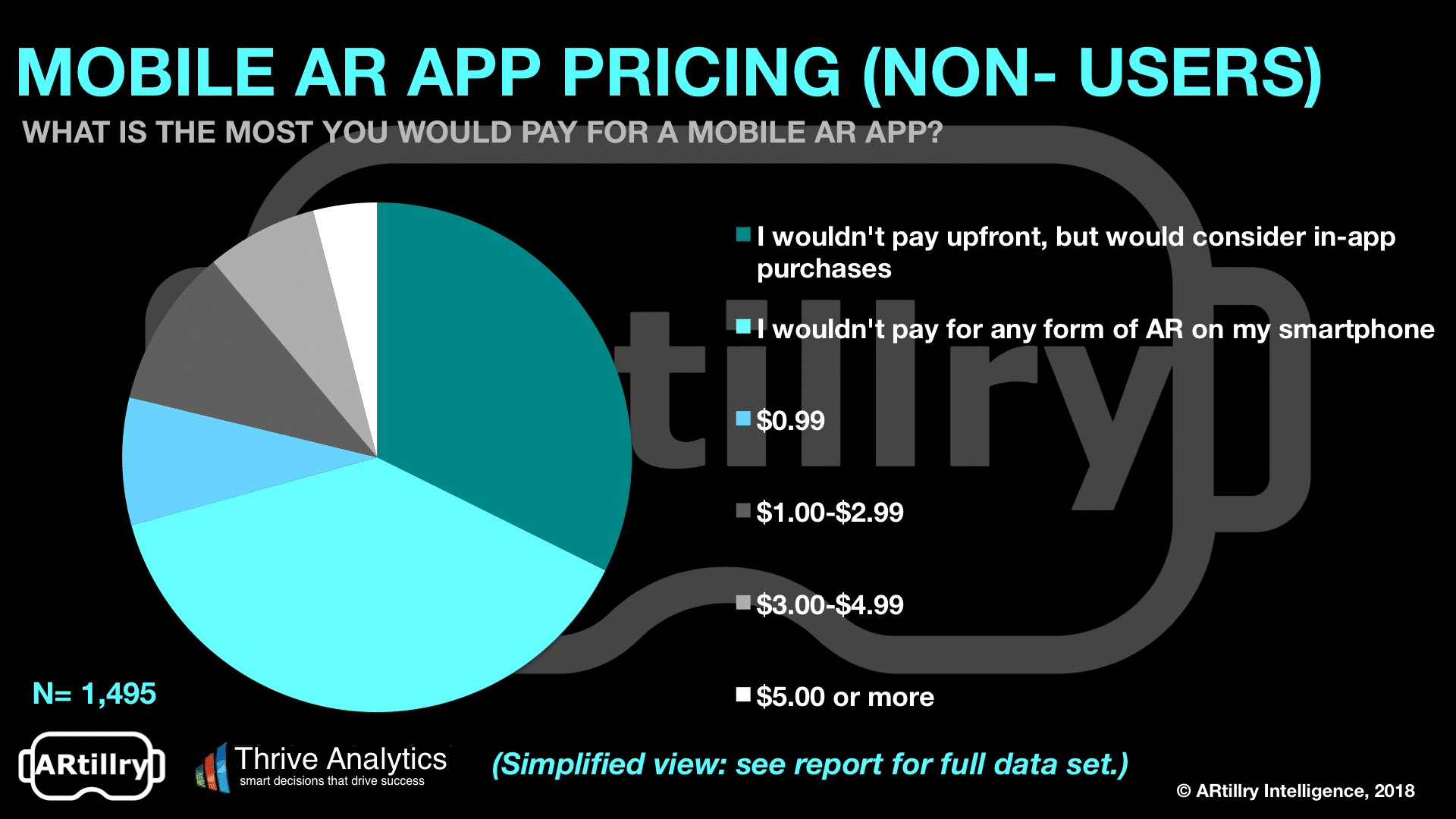
Data Point of the Week is AR Insider’s weekly dive into data from around the XR universe. Spanning usage and market-sizing data, it’s meant to draw insights for XR players or would-be entrants. To see an indexed archive of data briefs and slide bank, subscribe to ARtillery Pro.
We continue to see clues for consumer AR success factors. Those clues are important in early stages of any emerging tech sector. Because it’s open season for potential killer apps, questions loom around optimal product strategies, UX design and revenue models. And the stakes are high.
With that backdrop, the latest data point is that Pokémon Go drove $800 million in revenue in 2018 according to Sensor Tower (standard disclaimer: third-party extrapolated figure). That comes after Niantic’s own disclosure in November that it drove $2 billion in revenue to date.
The $800 million is a 35 percent year-over-year increase, amplified by a strong December which drove $75 million. It’s also an average of about $2.2 million per day, up from $1.6 million in 2017. The surge has a lot to do with game updates and releases, a key lesson for app engagement.
What are other lessons? First and foremost, Pokemon Go’s revenue model provides some clues over what types of AR experiences consumers will actually pay for. As we’ve examined, early/unproven tech like AR has high price sensitivity for upfront purchases (premium apps).

Pokemon Go has gotten around that by basing most of its revenue model on in-app purchases (IAP). Beyond price sensitivity, IAP is generally a validated payment scheme, around which consumers have been acclimated through years of successful apps, especially in gaming.
Further in support of IAP, it was validated in our consumer survey research with Thrive Analytics. The data indicate that non-AR users — those who don’t currently used AR but are asked about their willingness — wouldn’t pay upfront for premium apps. But they are open to IAP.
We should acknowledge a few variables though, in order to avoid false positives or take away the wrong lessons. All of Pokemon Go’s success isn’t due to AR, as its just one component. It’s primarily a location-based game that includes AR features (which many users deactivate).
Furthermore, the notion that IAP = AR success should first consider the app category. IAP is conducive to gaming due to game mechanics that drive micro-transactions at scale (a lesson in behavioral economics). The same can be true in other categories… but IAP isn’t a silver bullet.
Another category where IAP aligns is social. AR lenses have already started to follow the path of Snapchat’s geo-filters where individuals pay to create custom lenses for an event (think: birthday party). Most AR lens revenue is brand ads, but there could also be a long-tail revenue play.
Where will IAP not work in AR? This is a moving target but signals indicate that media and information experiences won’t work. We say that because consumers have been conditioned to expect subscription or free ad-supported experiences. This is how Google Lens will play out.
As for lessons in UX, AR’s success in Pokemon Go’s is owed to the fact that it’s, again, a feature rather than a primary function. AR is integrated into an app that has other points of appeal, thus riding its coattails into mass awareness. And the strength of Pokemon’s IP can’t be understated,
The latter is a success factor that we’ll see replicated in Harry Potter Wizards Unite. Built on proven game mechanics of Pokemon Go, Niantic’s expanding game architecture, and a strong brand/IP, it has all the ingredients for mass adoption. And that could be a moment of truth for AR.
Of course, all this just scratches the surface for AR lessons from Pokemon Go. Like we said, it will be a moving target. But we can extrapolate lessons as we go. And that exercise gains precision with more data points and as evidence stacks up. That will take time but we’re watching closely.
For deeper XR data and intelligence, join ARtillery PRO and subscribe to the free AR Insider Weekly newsletter.
Disclosure: AR Insider has no financial stake in the companies mentioned in this post, nor received payment for its production. Disclosure and ethics policy can be seen here.
Header image credit: Niantic
